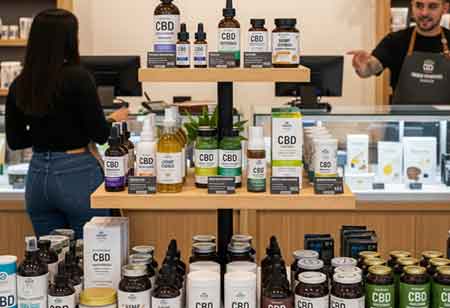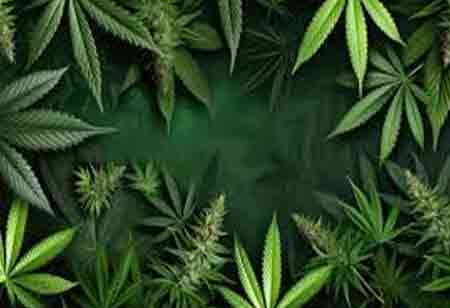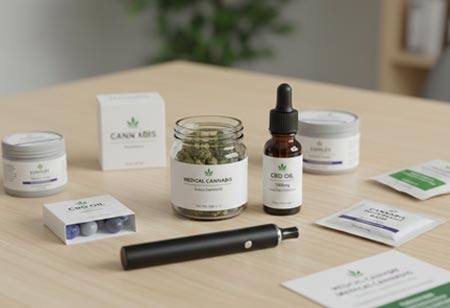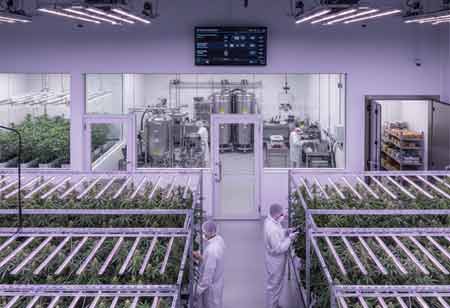Thank you for Subscribing to Cannabis Business Insights Weekly Brief
The Rise of Non-Psychoactive Hemp in Global Markets
The non-psychoactive hemp market is rapidly growing, driven by wellness trends, sustainable textiles, and industrial innovations, projected to reach USD 28.56 billion by 2033.

By
Cannabis Business Insights | Monday, November 24, 2025
Stay ahead of the industry with exclusive feature stories on the top companies, expert insights and the latest news delivered straight to your inbox. Subscribe today.
A revitalized global perception and an escalating demand for sustainable solutions are fueling an unprecedented surge in the non-psychoactive hemp market, with industry analysts projecting a staggering climb to USD 28.56 billion by 2033. This remarkable growth trajectory is underpinned by a trifecta of powerful drivers: the burgeoning wellness movement, a paradigm shift in the textile industry, and the innovative applications of hemp in various industrial sectors. As consumers and enterprises alike seek eco-friendly and versatile alternatives, hemp is re-emerging as a cornerstone of a new, green economy.
The Rise of Hemp in the Wellness Sector
The burgeoning consumer focus on health and wellness has become a significant catalyst for the hemp market. Rich in cannabidiol (CBD), essential fatty acids, proteins, and vitamins, hemp-derived products are increasingly sought after for their perceived therapeutic and nutritional benefits. The wellness sector is witnessing a proliferation of hemp-based offerings, ranging from oils and tinctures to edibles and topical applications. This demand is not merely a fleeting trend, but rather reflects a more profound societal shift toward natural and plant-based health solutions. Consumers are increasingly incorporating these products into their daily routines to manage stress, improve sleep, and enhance overall well-being, thereby creating a robust and expanding consumer base.
The nutritional powerhouse that is the hemp seed is also carving out a substantial niche in the food and beverage industry. Hemp seeds, hearts, and protein powder are gaining traction as superfoods, lauded for their complete protein profile and balanced omega fatty acid content. This has led to their inclusion in a wide array of products, from protein bars and smoothies to non-dairy milk and cooking oils. The plant-based food revolution has further amplified the demand for hemp as a sustainable and nutrient-dense ingredient, appealing to vegans, vegetarians, and health-conscious consumers globally.
A Sustainable Alternative in Fashion
In textiles, hemp is staging a remarkable comeback, challenging the dominance of conventional fabrics. The textile industry, long criticized for its environmental footprint, is increasingly turning to hemp as a sustainable and high-performance alternative. Hemp cultivation requires significantly less water and pesticides compared to traditional crops like cotton, making it an inherently more eco-friendly choice. The fibers extracted from the hemp stalk are renowned for their strength, durability, and breathability.
Technological advancements in fiber processing have overcome previous limitations, enabling the production of hemp fabrics that are soft, versatile, and suitable for a wide range of apparel and home furnishing applications. From high-fashion garments to everyday essentials, hemp is being embraced for its unique combination of sustainability and superior material properties. As the fashion industry continues to gravitate towards circularity and responsible sourcing, the demand for hemp textiles is set to accelerate, contributing significantly to the overall market growth.
Hemp’s Industrial Potential: From Carbon-Negative Concrete to Biodegradable Plastics
Beyond consumer-facing products, the industrial applications of hemp are proving to be a game-changer for numerous sectors. The entirety of the hemp plant, from its stalks to its seeds, offers a treasure trove of renewable raw materials. The strong and lightweight woody core of the hemp stalk, known as the hurd, is a key component in the production of sustainable building materials like hempcrete. This bio-composite material is not only an excellent insulator but is also carbon-negative, actively sequestering carbon dioxide from the atmosphere. As the construction industry faces mounting pressure to decarbonize, materials like hempcrete are poised for widespread adoption, offering a viable path towards greener building practices.
The versatility of hemp extends to the burgeoning bioplastics industry. As concerns over plastic pollution intensify, hemp-based bioplastics present a biodegradable and renewable alternative to their petroleum-based counterparts. These bioplastics can be utilized in a variety of applications, from packaging and consumer goods to automotive components. The use of hemp fibers as a reinforcing agent in composites is also gaining traction, offering a lightweight and sustainable alternative to traditional materials like fiberglass.
The projected ascent of the non-psychoactive hemp market is a testament to its multifaceted appeal and its alignment with key global trends. The convergence of the wellness boom, the sustainable fashion movement, and the drive for green industrial innovation has created a fertile ground for the hemp industry to flourish. As research and development continue to unlock the full potential of this versatile crop, and as regulatory frameworks become more favorable, the trajectory of the hemp market points towards a future where sustainability and economic growth go hand in hand, heralding a new era of green prosperity.






